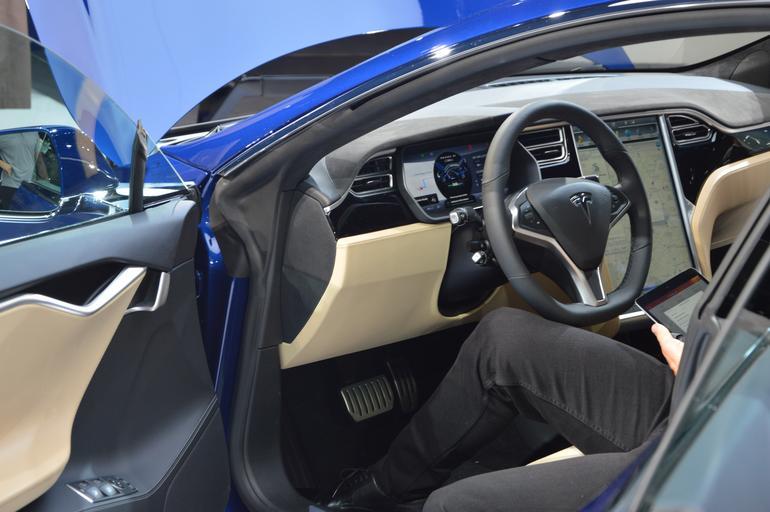
Tesla cars are some of the most reliable vehicles out there. They have won numerous awards for their dependability and durability. But, does Tesla have a check engine light?
Tesla does not have a check engine light because Tesla is a fully electric motor-powered vehicle that does not have an engine, therefore, they don’t have a check engine warning light.
What is a Tesla?
The Tesla company is mostly known for their electric cars but they are also an energy company. They usually develop the batteries they use to manufacture their cars.
Tesla makes electric cars, such as the Model S and Model X SUVs and sedans; it also makes electric SUVs, sedans, pickup trucks, and buses. They have a range of models at different price points that can be used for personal or commercial purposes.
What is a Check Engine Light?
The check engine light is an indicator that your car’s computer has detected something wrong with the engine. It can be caused by several different issues, including:
A problem with the catalytic converter or other parts of the exhaust system, A problem with your fuel injectors (the part that sends fuel into the cylinders). A missing or malfunctioning oxygen sensor.
It may be an oil sensor fault that needs checking, or it could be an airbag fault that requires fixing by replacing the part in question.
Checking out these issues can help prevent accidents from occurring later while you’re driving especially when other things are going wrong with your vehicle (like leaking brakes).
Does Tesla Have a Check Engine Light?
No, Tesla does not have a check engine light but it has an equivalent that notifies the driver or car owner when something is wrong with the vehicle.
The error codes that are equivalent to the check engine light on a Tesla have two very different meanings depending on if it is steady or flashing.
If you see an amber “check” or green “go” icon on your dashboard, it means there’s something wrong with your vehicle’s computer system (ECU), which controls most functions in cars like steering, braking, and acceleration through sensors called transponders
These transponders can malfunction at different times because they’re not designed for prolonged use under extreme conditions such as cold weather or high humidity levels.
So when you have been unsung the car for a long, especially in any of the said weather conditions, it can malfunction. When this happens, you’ll see either one of two things:
- A steady green icon indicates that no immediate action needs to be taken since nothing seems amiss
- A flashing blue icon indicates some kind of problem within the ECU itself such as overheating either directly caused by excessive heat build-up inside certain areas within housing sections present within certain parts located around components.
What are Common Problems with Tesla?
In different models of Tesla cars, there are a few problems that are now considered common because of how concurrent these same types of complaints or the same type of faults have been developed in different Tesla cars.
Tesla cars are electric and they basically live on batteries. Some owners have complained about facing issues with the battery of the electric car and without the battery, there’s almost nothing that can be done to move the car from its current position.
Common Tesla problems are:
- Charging Issues
- Software Issues
- Electrical Issues
- Engine Problems (including the P0456 code)
- Brake Problems, Suspension Problems, Transmission Problems, etc.
How Would You Know if Your Tesla is Having a Problem that Needs Fixing?
Your car will alert you if a fault has been detected. You will receive a message on your touchscreen that tells you exactly what’s wrong with your car.
A fault code is also displayed, and it can be checked for yourself in the car’s system. If there is no fault code, then it means that nothing has been detected by Tesla’s diagnostic software.
If you’re unable to reset this fault code manually, then we recommend taking your vehicle to an authorized service center so they can do it for you but again, this should only be done if absolutely necessary.
If your TPMS warning light is flashing, then it means that there is a problem with one of the sensors in your tires.
If you have a TPMS warning light on your car and it’s flashing, then you may need to reset the TPMS light if you have checked and the tires are all fine.
The best way to fix this issue is by replacing all four sensors in each tire (16 total). However, if the message that is being shown on the screen of your car is TPMS sensor failure, then there is another way around this issue.
The only other way of rectifying this issue is by resetting the TPMS warning light as soon as possible after replacing any old tires with new ones.
Conclusion
So, if you see a light on your dashboard and it displays an error code or something similar to the check engine light, it may be a good idea to get it checked out.
The best thing you can do is go in and speak with the technician who will be able to tell you what needs fixing and how much they are going to charge for their services.

